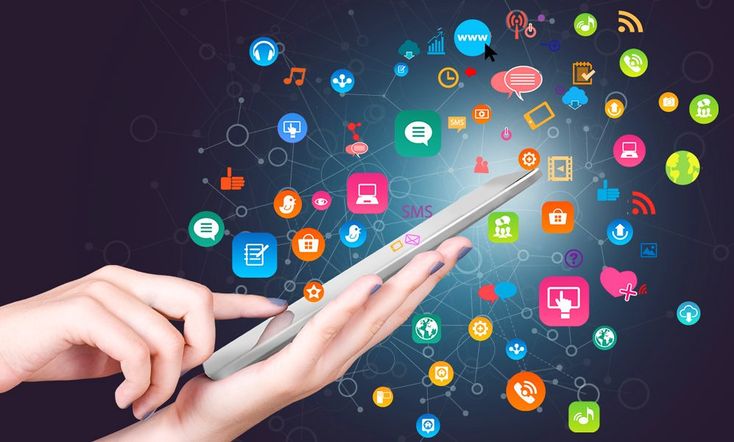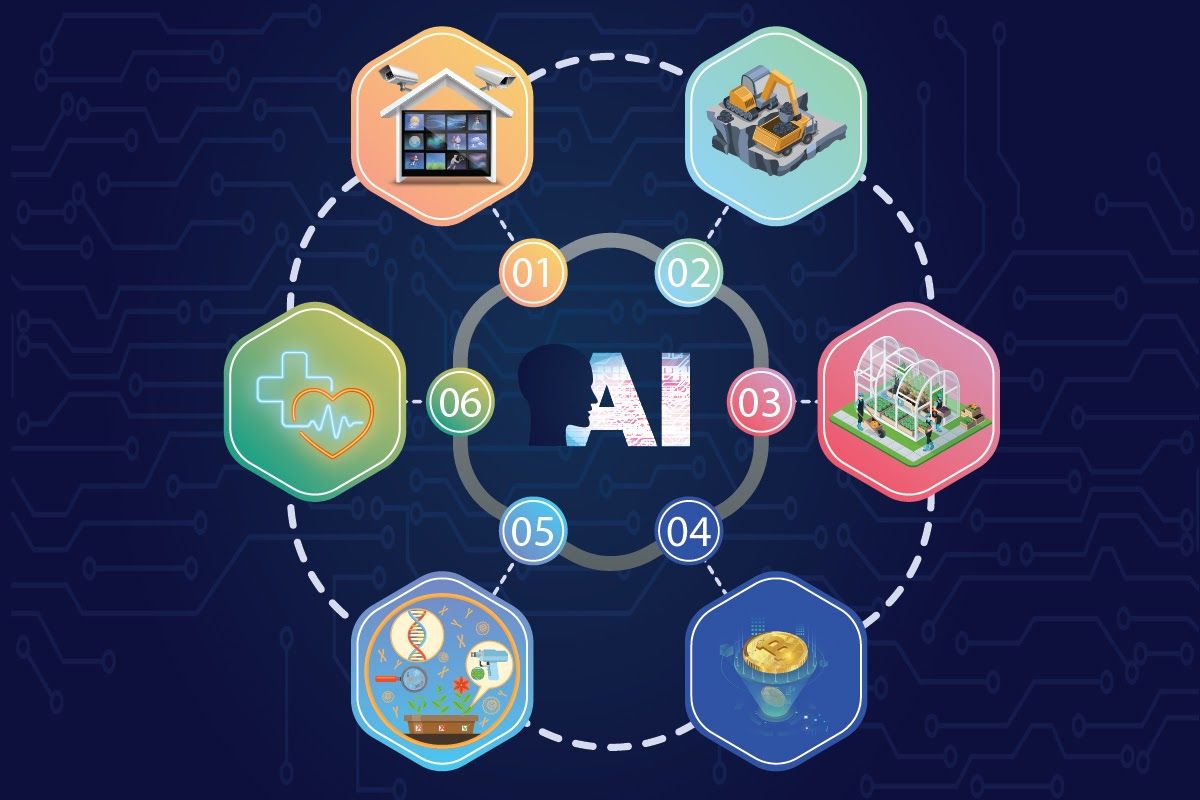The Unstoppable March of Digitalization
In an increasingly interconnected world, digital tools have transitioned from niche technological advancements to indispensable components of our daily lives. What started as simple innovations has blossomed into a complex ecosystem of software, hardware, and networks that profoundly impacts how we work, communicate, learn, and even relax. This pervasive influence isn’t just about convenience; it represents a fundamental shift in societal structure, economic models, and personal interactions. From the moment we wake up to the alarm on our smartphone to the smart devices that regulate our homes, digital tools are quietly, yet powerfully, orchestrating a revolution in the mundane and the magnificent. This comprehensive article delves into the diverse facets of this digital transformation, exploring the underlying technologies, myriad applications across various sectors, the profound societal shifts they engender, and the exciting trajectory of their future development.
What Defines Digital Tools?
At their heart, digital tools are any electronic resources, programs, or applications designed to facilitate tasks, process information, or enable communication using digital technologies. Their power lies in their ability to automate, analyze, and connect, often leveraging advanced computational capabilities.
A. Software Applications: The Brains Behind the Operations
Software applications form the backbone of most digital tools, providing the instructions and interfaces that allow us to interact with hardware and information. These range from simple utilities to complex enterprise systems.
- Productivity Suites (e.g., Microsoft 365, Google Workspace): These collections of applications, including word processors, spreadsheets, and presentation software, have become the standard for professional and academic work. They enable efficient document creation, data analysis, and collaborative efforts, fundamentally transforming office environments. Their cloud-based counterparts have further enhanced real-time collaboration across geographical boundaries.
- Communication Platforms (e.g., Zoom, Slack, WhatsApp): These tools have revolutionized how we connect, both personally and professionally. They offer instant messaging, voice and video calls, and file sharing, enabling seamless communication regardless of location. The rise of these platforms has significantly impacted remote work and global team collaboration.
- Creative Software (e.g., Adobe Creative Suite, Blender): Catering to artists, designers, and content creators, these applications empower individuals to produce digital art, edit videos, design websites, and develop complex graphics. They’ve democratized content creation, allowing more people to express their creativity digitally.
- Operating Systems (e.g., Windows, macOS, Android, iOS): While often taken for granted, operating systems are the foundational software that manages computer hardware and software resources. They provide the user interface and allow applications to run, making them the silent orchestrators of our digital experiences.
- Web Browsers (e.g., Chrome, Firefox, Safari): These applications are our gateways to the vast expanse of the internet, allowing us to access websites, online services, and cloud-based applications. They are essential for research, entertainment, and nearly all online activities.
- Specialized Business Software (e.g., CRM, ERP, CAD): Customer Relationship Management (CRM) systems manage customer interactions, Enterprise Resource Planning (ERP) systems integrate various business functions, and Computer-Aided Design (CAD) software assists in design and drafting. These industry-specific tools streamline operations and enhance efficiency across diverse sectors.
B. Hardware Devices: The Physical Enablers
While software provides the intelligence, hardware provides the physical means for digital tools to exist and operate. These devices range from personal gadgets to large-scale infrastructure.
- Personal Computing Devices (e.g., Laptops, Desktops, Tablets): These devices remain fundamental for a wide array of tasks, from complex computations to casual Browse. Their portability and processing power have continually evolved, adapting to changing user needs.
- Smartphones: The Ubiquitous Digital Hub: More than just communication devices, smartphones have become central to our digital lives. They integrate cameras, GPS, web Browse, and countless apps, serving as portable digital assistants, entertainment centers, and productivity tools. Their constant connectivity makes them indispensable.
- Wearable Technology (e.g., Smartwatches, Fitness Trackers): These devices extend digital capabilities to our bodies, monitoring health metrics, providing notifications, and even enabling contactless payments. They offer personalized data and insights, blurring the lines between technology and personal well-being.
- Smart Home Devices (e.g., Smart Speakers, Smart Lighting, Connected Appliances): These devices transform living spaces into intelligent environments, allowing for automation, remote control, and energy efficiency. They create a seamless, interconnected home experience.
- Networking Hardware (e.g., Routers, Modems): These components are crucial for connecting devices to the internet and to each other, forming the backbone of our digital infrastructure. They enable the flow of information that powers all online digital tools.
- Peripherals (e.g., Printers, Scanners, External Drives): These devices extend the functionality of primary computing devices, allowing for tasks like document printing, digitization, and data storage.
C. Internet Connectivity: The Lifeline of Modern Digital Tools
The internet serves as the foundational infrastructure that enables most modern digital tools to function effectively. Without robust and widespread connectivity, the potential of many digital innovations would be severely limited.
- Broadband and Fiber Optics: High-speed internet connections, particularly fiber optics, provide the necessary bandwidth for data-intensive applications like video streaming, cloud computing, and real-time collaboration.
- Mobile Data (4G, 5G): Mobile internet connectivity has liberated digital tools from fixed locations, allowing for ubiquitous access to online services and applications, profoundly impacting portability and on-the-go productivity.
- Wi-Fi Networks: Wireless fidelity networks provide convenient local area network access, allowing devices to connect to the internet without physical cables, facilitating mobility within homes, offices, and public spaces.
Applications Across Sectors: Digital Tools in Action
The influence of digital tools spans virtually every sector, revolutionizing processes, improving efficiency, and creating new opportunities.
A. Business and Commerce: Driving Growth and Efficiency
Digital tools have fundamentally reshaped how businesses operate, communicate, and reach their customers.
- E-commerce Platforms (e.g., Amazon, Shopify): These platforms have transformed retail, allowing businesses to sell products and services globally, reaching a wider customer base than ever before. They offer convenience for consumers and new avenues for entrepreneurship.
- Digital Marketing and Advertising: Social media marketing, search engine optimization (SEO), email marketing, and programmatic advertising are now standard practices for reaching target audiences, analyzing campaign performance, and building brand awareness.
- Cloud Computing Services (e.g., AWS, Azure, Google Cloud): Cloud platforms provide on-demand computing resources, storage, and software, enabling businesses to scale operations, reduce IT infrastructure costs, and enhance data accessibility and collaboration.
- Data Analytics and Business Intelligence: Digital tools for collecting, analyzing, and visualizing vast datasets provide businesses with actionable insights into customer behavior, market trends, and operational performance, driving data-driven decision-making.
- Customer Relationship Management (CRM) Systems: These systems help businesses manage and analyze customer interactions and data throughout the customer lifecycle, improving customer service relationships and assisting in customer retention and sales growth.
- Supply Chain Management Software: Digital tools optimize logistics, inventory management, and supplier relationships, enhancing efficiency and transparency across complex global supply chains.
B. Education and Learning: Empowering Knowledge Acquisition
Digital tools have revolutionized the educational landscape, offering new modalities for teaching and learning.
- Learning Management Systems (LMS) (e.g., Moodle, Canvas, Google Classroom): These platforms facilitate online course delivery, assignment submission, grade tracking, and communication between students and instructors, forming the backbone of virtual and blended learning environments.
- Online Learning Resources (e.g., Coursera, edX, Khan Academy): MOOCs (Massive Open Online Courses) and other online platforms provide access to a vast array of educational content from leading institutions, democratizing knowledge and fostering lifelong learning.
- Interactive Whiteboards and Projectors: These tools enhance classroom engagement by allowing dynamic presentations, collaborative problem-solving, and integration of multimedia content.
- Educational Apps and Games: Gamified learning experiences and specialized educational apps make learning more engaging and accessible, particularly for younger students, offering personalized instruction and practice.
- Virtual Reality (VR) and Augmented Reality (AR) in Education: These immersive technologies are beginning to offer new ways to visualize complex concepts, conduct virtual lab experiments, and explore historical sites, providing richer learning experiences.
- Digital Libraries and Databases: Online access to vast collections of academic journals, books, and research papers has transformed research and scholarship, making information more readily available to students and researchers worldwide.
C. Healthcare and Wellness: Advancing Diagnostics and Care
Digital tools are playing an increasingly vital role in improving patient care, medical research, and public health.
- Electronic Health Records (EHR) Systems: These digital records streamline patient information management, improve data sharing among healthcare providers, and reduce medical errors, leading to more coordinated and efficient care.
- Telemedicine Platforms: Video conferencing and secure messaging allow patients to consult with healthcare professionals remotely, increasing access to care, especially in rural areas, and reducing the burden on physical clinics.
- Wearable Health Monitors (e.g., Smartwatches with ECG, Glucose Monitors): These devices collect real-time health data, enabling continuous monitoring of chronic conditions, early detection of health issues, and personalized wellness tracking.
- Medical Imaging Software: Digital tools assist in the analysis of X-rays, MRIs, and CT scans, leveraging AI to detect anomalies and aid in diagnosis with greater accuracy.
- Drug Discovery and Development Software: Computational tools accelerate the research and development of new pharmaceuticals by simulating molecular interactions and analyzing vast biological datasets.
- Fitness and Wellness Apps: These apps help individuals track their physical activity, nutrition, sleep, and mental well-being, providing personalized coaching and motivational tools.
D. Government and Public Services: Enhancing Governance and Citizen Engagement
Digital tools are transforming public administration, making government services more accessible and efficient.
- E-Government Portals: Online platforms allow citizens to access public services, submit applications, pay taxes, and obtain information without needing to visit physical offices, improving convenience and reducing bureaucratic hurdles.
- Smart City Initiatives: Digital technologies like IoT sensors, data analytics, and intelligent traffic management systems are used to optimize urban infrastructure, improve public safety, and enhance the quality of life in cities.
- Digital Identity Systems: Secure digital IDs streamline verification processes, making interactions with government services more efficient and reducing fraud.
- Public Safety and Emergency Response Systems: Digital tools aid in disaster management, crime prediction, and emergency communication, improving response times and coordination during crises.
- Open Data Initiatives: Governments are increasingly making public data available digitally, fostering transparency, encouraging innovation, and enabling citizens and researchers to analyze public information.
E. Arts, Entertainment, and Culture: New Avenues for Expression and Consumption
Digital tools have revolutionized how we create, consume, and share artistic and cultural content.
- Digital Art and Design Software: Artists use tools like Photoshop, Illustrator, and digital sculpting software to create new forms of visual art, illustrations, and 3D models.
- Music Production Software (DAWs): Digital Audio Workstations allow musicians to compose, record, mix, and master music, democratizing music production and enabling home studios.
- Video Editing and Special Effects Software: Professional and amateur filmmakers use these tools to create high-quality videos, add visual effects, and produce compelling narratives.
- Streaming Services (e.g., Netflix, Spotify, YouTube): These platforms have transformed content consumption, providing on-demand access to vast libraries of movies, TV shows, music, and user-generated content, shifting from traditional broadcast models.
- Virtual Museums and Galleries: Digital tools allow for virtual tours of museums and cultural sites, making art and history accessible to a global audience, regardless of physical location.
- Gaming Consoles and PC Gaming: The evolution of gaming platforms and increasingly realistic graphics have created a massive entertainment industry, fostering communities and pushing the boundaries of interactive storytelling.
Societal Implications: Navigating the Digital Age
The pervasive nature of digital tools brings with it profound societal implications, both beneficial and challenging. Understanding these impacts is crucial for responsible development and adoption.
A. Connectivity and Global Collaboration
Digital tools have dissolved geographical barriers, fostering unprecedented levels of connectivity and global collaboration. Individuals and organizations can communicate and work together in real-time across continents, leading to increased innovation, cultural exchange, and a more interconnected global community. This has particularly impacted scientific research and business operations, enabling truly global teams.
B. Information Access and Democratization of Knowledge
The internet, powered by digital tools, has democratized access to information on an unparalleled scale. Knowledge once confined to libraries and exclusive institutions is now readily available to billions. This empowers individuals to learn, research, and stay informed, potentially leading to a more educated and engaged populace. However, it also raises challenges regarding information overload and the proliferation of misinformation.
C. Economic Transformation and New Job Opportunities
Digital tools have spurred new industries, created entirely new job categories (e.g., data scientists, UX designers, social media managers), and transformed existing ones. The gig economy, fueled by digital platforms, has offered flexible work arrangements. While some traditional jobs may be automated, the digital economy promises new avenues for entrepreneurship and economic growth.
D. Privacy and Data Security Concerns
The extensive use of digital tools often involves the collection and processing of vast amounts of personal data. This raises significant concerns about privacy, data breaches, and the potential misuse of sensitive information. Ensuring robust cybersecurity measures, clear data protection regulations, and individual control over personal data are paramount challenges in the digital age. The debate over data ownership and algorithmic transparency continues to evolve.
E. Digital Divide and Inequality
Despite the widespread adoption of digital tools, a significant “digital divide” persists, where access to technology and internet connectivity is unevenly distributed based on socioeconomic status, geography, and other factors. This can exacerbate existing inequalities, limiting educational and economic opportunities for those without adequate access. Efforts to bridge this divide are crucial for ensuring equitable participation in the digital society.
F. Impact on Mental Health and Well-being
The constant connectivity and social media integration inherent in many digital tools can have complex impacts on mental health. While they offer avenues for social connection, excessive use can lead to addiction, anxiety, cyberbullying, and unrealistic social comparisons. Promoting digital literacy, encouraging mindful technology use, and developing features that support well-being are increasingly important considerations.
G. Cybersecurity Threats and Digital Resilience
As our reliance on digital tools grows, so too does our vulnerability to cyber threats. Hacking, phishing, malware, and ransomware attacks pose significant risks to individuals, businesses, and critical infrastructure. Building robust cybersecurity defenses, fostering digital resilience, and educating users about online safety are ongoing challenges that require continuous adaptation.
The Future of Digital Tools: Emerging Horizons
The evolution of digital tools is an ongoing process, driven by advancements in underlying technologies and changing user needs. Several key trends are shaping their future.
A. Artificial Intelligence (AI) and Machine Learning (ML) Integration
AI and ML are becoming increasingly embedded in digital tools, enabling them to learn, adapt, and perform tasks that traditionally required human intelligence. This includes personalized recommendations, intelligent automation, natural language processing for conversational interfaces, and advanced data analytics. The future will see more proactive and predictive digital tools that anticipate user needs.
B. Augmented Reality (AR) and Virtual Reality (VR) Expansion
AR and VR are poised to transcend entertainment, integrating into various digital tools for education, training, remote collaboration, and design. Imagine virtual meeting spaces that feel like in-person interactions, or AR applications that overlay digital information onto the real world for navigation or maintenance tasks. These technologies promise more immersive and intuitive digital experiences.
C. Internet of Things (IoT) Proliferation and Smart Environments
The IoT, where everyday objects are connected to the internet and can collect and exchange data, will continue to expand. This will lead to increasingly intelligent and responsive environments, from smart homes and smart cities to connected factories and intelligent healthcare systems. Digital tools will be at the heart of managing and leveraging the vast amounts of data generated by IoT devices.
D. Blockchain Technology and Decentralization
Blockchain, the distributed ledger technology behind cryptocurrencies, is finding applications beyond finance. It offers potential for enhanced security, transparency, and decentralization in various digital tools, including supply chain management, digital identity verification, and secure data sharing. This could lead to a more trustworthy and resilient digital infrastructure.
E. Quantum Computing: The Next Computational Leap
While still in its early stages, quantum computing holds the potential to solve problems currently intractable for classical computers. When it matures, it could revolutionize fields like materials science, drug discovery, and cryptography, leading to fundamentally new types of digital tools and capabilities.
F. Human-Centric Design and Ethical AI
Future digital tools will place a greater emphasis on human-centric design, focusing on intuitive user experiences, accessibility, and well-being. There will also be a growing focus on ethical AI, ensuring that algorithms are fair, transparent, and accountable, and that digital tools are developed and deployed responsibly.
Conclusion
Digital tools are not just a collection of technologies; they are the architects of our modern existence, fundamentally reshaping the fabric of our daily lives. Their relentless evolution continues to unlock unprecedented opportunities for efficiency, connectivity, learning, and innovation across every conceivable sector. From enabling global collaboration and democratizing information to transforming healthcare and reimagining entertainment, the impact is undeniable and irreversible.
However, with this immense power comes a profound responsibility. The challenges of privacy, cybersecurity, the digital divide, and the potential impact on mental well-being are real and demand careful consideration. As we move forward, the imperative is to design, develop, and deploy digital tools with an unwavering commitment to ethical principles, inclusivity, and sustainability. The future promises an even more deeply integrated digital experience, one where intelligence and connectivity are seamlessly woven into our environments and interactions. By embracing the potential while mitigating the risks, we can ensure that the ongoing digital revolution serves to enrich, empower, and uplift all of humanity.














